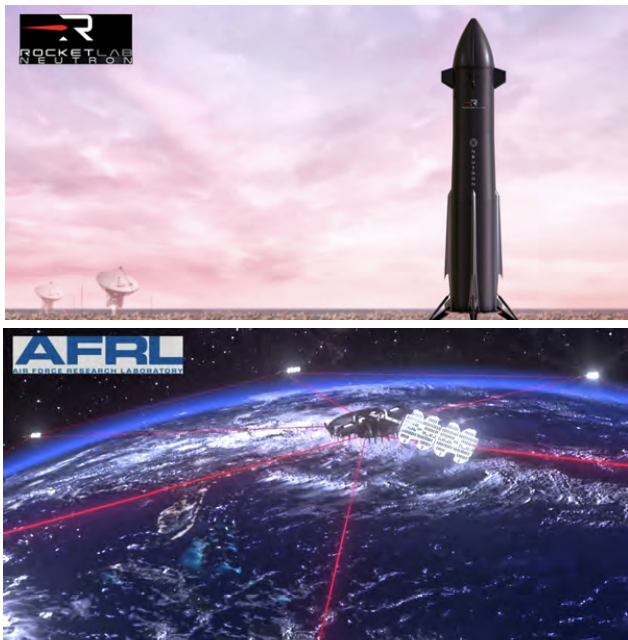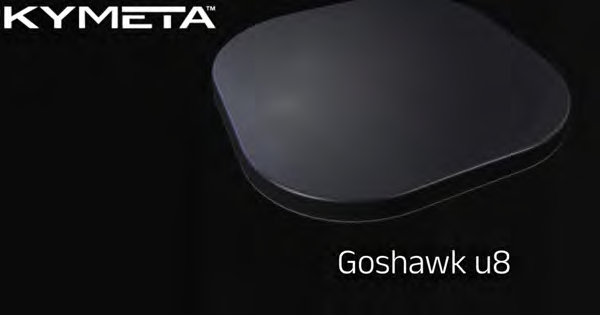Rocket Lab partners with U.S.A.F. | AFRL for Neutron launch for rocket cargo missions
Rocket Lab USA, Inc. (Nasdaq: RKLB) will launch their medium-lift, reusable rocket—Neutron—for the U.S. Air Force Research Laboratory (AFRL) for a Rocket Cargo mission that supports point-to-point cargo transportation and this mission is scheduled for a return-to-Earth launch no earlier than 2026.

The launch contract will see Neutron execute a Rocket Cargo survivability experiment under the AFRL Rocket Experimentation for Global Agile Logistics (REGAL) solicitation, an effort by the Department of Defense to create a rocket-based point-to-point transportation system to quickly and rapidly deliver cargo around the world with commercial launch providers. AFRL’s experiment will be launched by Neutron and re-enter Earth’s atmosphere in a demonstration of re-entry capability for future REGAL missions.
Rocket Lab’s Neutron medium-lift reusable launch vehicle will provide both government and commercial customers with an alternative
and reliable launch service capable of deploying 13,000 kg to LEO. Neutron is tailored to deploy constellations and national security missions as well as science and exploration payloads. Neutron’s debut remains on track for first launch in the second half of 2025.
USSF defines path to space superiority in 1st warfighting framework
The United States Space Force (USSF) has released the Space Warfighting framework that outlines the service’s vision for achieving and maintaining space superiority, while ensuring the long-term safety and sustainability of the space domain.

`This landmark document underscores the critical importance of space superiority as a joint force priority, recognizing it as an essential element for the success of military operations across all domains.
The framework establishes a common lexicon for counterspace operations, detailing a range of responsible offensive and defensive actions Guardians may employ to maintain control of space and ensure the success of the Joint Force.
Counterspace operations will be executed across three primary mission areas: orbital warfare, electromagnetic warfare and cyberspace warfare. At the direction of combatant commanders, Guardians may conduct counterspace operations including terrestrial strike, orbital strike, space link interdiction and active and passive space defense,
Space Warfighting marks a significant step forward in solidifying the Space Force as a warfighting service and integral part of the Joint and Combined Force, highlighting the essential role of space superiority for national security.
“It is the formative purpose of the Space Force to achieve space superiority—to ensure freedom of movement in space for our forces while denying the same to our adversaries,” said Chief of Space Operations Gen. Chance Saltzman. “We must be prepared to employ capabilities for offensive and defensive purposes to deter and, if necessary, defeat aggressors that threaten our vital national interests.
”This document builds on the Military Space Operations terms of reference and Space Force Doctrine Document 1 to increase U.S. lethality and deter would-be aggressors in space,” said Lt. Gen. Shawn Bratton, deputy chief of Space Operations for Strategy, Plans, Programs and Requirements. “We developed Space Warfighting to expand on the tenets of Competitive Endurance and the Space Force Truths. With Space Warfighting, we establish the counterspace framework necessary for Guardians to achieve space superiority, a precondition for Joint Force success.”
Gilat receives a $6 million defense contract for military comms in APAC
Gilat Satellite Networks Ltd. (NASDAQ: GILT, TASE: GILT) has announced the company’s Defense Division secured an order valued at $6 million to provide the SkyEdge II-c platform to a military organization in the Asia-Pacific region.

The advanced satellite communications solution will support both fixed and mobility sites, ensuring secure and reliable connectivity for critical defense operations with enhanced air interface cyber security. Delivery is expected over the next 3 months.
Gilat’s SkyEdge II-c platform is designed to meet the demanding requirements of military communications, providing high resilience, efficiency, and robust security for mission-critical applications.
This contract underscores the confidence in Gilat’s field-proven technology and the company’s long-standing expertise in delivering advanced satellite solutions for defense organizations worldwide.
We continue expanding our operations in the defense market both in and out of the U.S. and are proud to support the growing needs of
military forces in the Asia-Pacific region with our state-of-the-art satellite communications technology,” said Gilad Landsberg, President of Gilat Defense. “This contract reaffirms our position as a trusted provider of secure and resilient SATCOM solutions, enabling seamless operations across diverse and challenging environments.”
L3Harris receives $214 million in orders to support the German armed forces
L3Harris Technologies (NYSE: LHX) has received multiple orders that are expected to total $214 million under Germany’s Digitalization – Land Based Operations (D-LBO) program.

These orders include delivery of interoperable communication systems to enhance the operational capabilities of the German Armed Forces.
L3Harris’ resilient communications solutions leverage battle-tested hardware and robust waveform technology, which support the D-LBO program’s objective for German armed forces to be more operationally efficient and coalition interoperable.
These orders follow other recent awards the company has received for Falcon® radios, including for the Netherlands’ FOXTROT and the U.S. Army’s HMS programs.
Resilient and immediate communication among allies is crucial for countering threats posed by aggressive adversaries,” said Sam Mehta, President, Communication Systems, L3Harris. “We are proud to support our NATO ally with our trusted communications technology, which has demonstrated its value in the field by protecting soldiers and networks at the tactical edge.”
SES Space & Defense to provide hybrid space-based architecture to the DoD
SES Space & Defense joins the Defense Innovation Unit’s (DIU) Hybrid Space Architecture Network initiative.

SES’s Hybrid Space Architecture II project will showcase an automatically orchestrated secure integrated multi-orbit network that interconnects commercial and government networks to deliver assured and affordable, low-latency, multi-path communications across a scalable and resilient multi-domain network.
SES Space & Defense will deliver an engineered multi-orbit network leveraging Secure Integrated Multi-Orbit Networking (SIMON™). This will enable always-on connectivity as an affordable, resilient alternative to traditional Primary, Alternate, Contingency, and Emergency (PACE) and auto-PACE operations currently used by warfighters across the Department of Defense (DoD) worldwide.
By blending LEO, MEO, and GEO capabilities in a purposeful manner, SIMON™ ensures that the warfighters’ data can affordably traverse multiple orbital regimes simultaneously, adapting and adjusting in real time to changing mission requirements.
“With SIMON™, warfighters will have the ability to ‘set and forget’ their user terminals and affordably realize assured connectivity across multiple orbits,” said David Fields, President and CEO of SES Space & Defense. “This transformational approach solves a decades-long dichotomy of affordability versus resilience, providing SATCOM agility, flexibility, and reliability for the forward deployed personnel.”
Eutelsat OneWeb + Kymeta debut multi-orbit SATCOM Terminal
Eutelsat OneWeb and Kymeta have announced the general availability of the new Kymeta™ Goshawk u8 flat-panel terminal on the Eutelsat OneWeb LEO network, a new multi-orbit terminal for government and military customers.

The terminal meets key defense needs by enabling the benefits of both GEO and LEO networks on one terminal, providing resilient, flexible multi-orbit connectivity across all operational domains. As nations boost defense spending and invest in sovereign SATCOM, the Goshawk u8 is purpose-built to deliver.
With robust and trusted communications being a top security priority, the Goshawk u8 delivers seamless connectivity from both LEO and GEO satellite networks in a single user terminal. The terminal’s rugged, low-profile design and reliable, high-bandwidth performance make it ideally suited for the evolving demands of allied nations’ defense and security sectors.
The Kymeta Goshawk u8 provides a ‘plug-and-play’ terminal, designed for use across a range of platforms, including land vehicles, maritime vessels, and fixed installations. Combining LEO, GEO, and cellular connectivity it allows for improved responsiveness to enable maneuver warfare tactics, such as rapid, focused, and unexpected actions that can shatter an enemy’s cohesion.
The Goshawk u8 delivers a critical solution with its flexible, open network architecture designed to support defense operations on the move.


